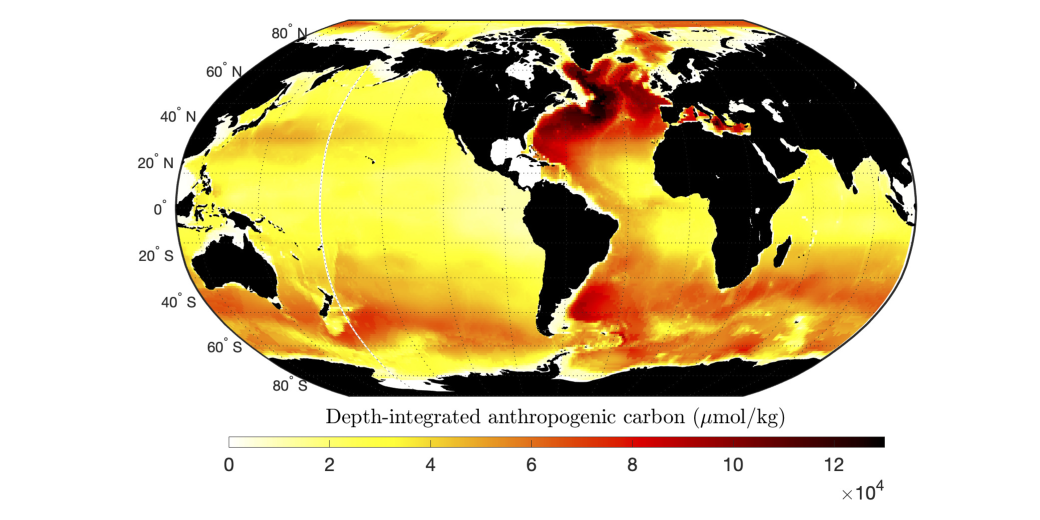
Lead supervisor: Laura Cimoli, DAMTP
Co-supervisor: Oscar Branson, Earth Sciences
Brief summary:
This project will use ocean observations and machine learning methods to explore how anthropogenic carbon is redistributed across the ocean by different water masses
Importance of the area of research concerned:
Anthropogenic carbon emissions are not just accumulating in the atmosphere, but interact in complex ways with the oceans and land components of the climate system as well. In particular, about 1/3 of anthropogenic carbon has already been taken up by the oceans, which contributed to mitigate the effects of climate change. However, the accumulation of such carbon into the ocean is causing other negative effects, such as ocean acidification. Moreover, there is a limit to the amount of carbon that the oceans can sequester. What is this limit? And how is this mitigation effect going to change in the future? And is the oceanic carbon going to remain in the sea, or is it going to leak back to the atmosphere in the future? To answer such questions, we first need to understand where and how carbon enters the ocean and how different water masses contribute to redistribute it globally, from the sea surface all the way to the ocean seafloor (Gruber et al. 2023)
Project summary :
The oceans have been mitigating the effects of climate change by sequestering ~1/3 of the anthropogenic carbon emitted and up to 90% of the warming caused by such emissions. Where is such carbon being stored and how long is it going to be sequestered for? This project will aim at addressing such questions by (i) reconstructing the ocean interior anthropogenic carbon concentration from available tracer concentrations (methodology described in Cimoli et al., 2023); (ii) employing machine learning regression methods to map the anthropogenic carbon concentrations into a three-dimensional global analysis; (iii) using such products to infer how anthropogenic carbon has been moving with and within different water masses, and to validate ocean and climate models.
What will the student do?:
The student will produce new observation-based products to investigate the distribution of anthropogenic carbon in the ocean interior. They will first work with globally available ocean observations and data-driven methods to reconstruct the time evolution of anthropogenic carbon in different locations in the ocean interior. They will then learn about machine learning algorithms (with python code language) to create (i) a global gridded map of anthropogenic carbon concentration, and (ii) complete a global water masses atlas. Such products will be used to investigate the transport and distribution of anthropogenic carbon in the ocean interior. The project will mostly involve data analysis and programming, but there will be the possibility to participate in fieldwork (scientific cruise). The student will have the possibility to participate in relevant summer schools/workshops, and will be expected to present the work to national and international conferences.
References - references should provide further reading about the project:
Gruber, N., Bakker, D. C., DeVries, T., Gregor, L., Hauck, J., Landschützer, P., ... & Müller, J. D. (2023). Trends and variability in the ocean carbon sink. Nature Reviews Earth & Environment, 4(2), 119-134.
Cimoli, L., Gebbie, G., Purkey, S. G., & Smethie, W. M. (2023). Annually resolved propagation of CFCs and SF6 in the global ocean over eight decades. Journal of Geophysical Research: Oceans, 128(3), e2022JC019337.
Applying
You can find out about applying for this project on the Department of Applied Mathematics and Theoretical Physics (DAMTP) page.